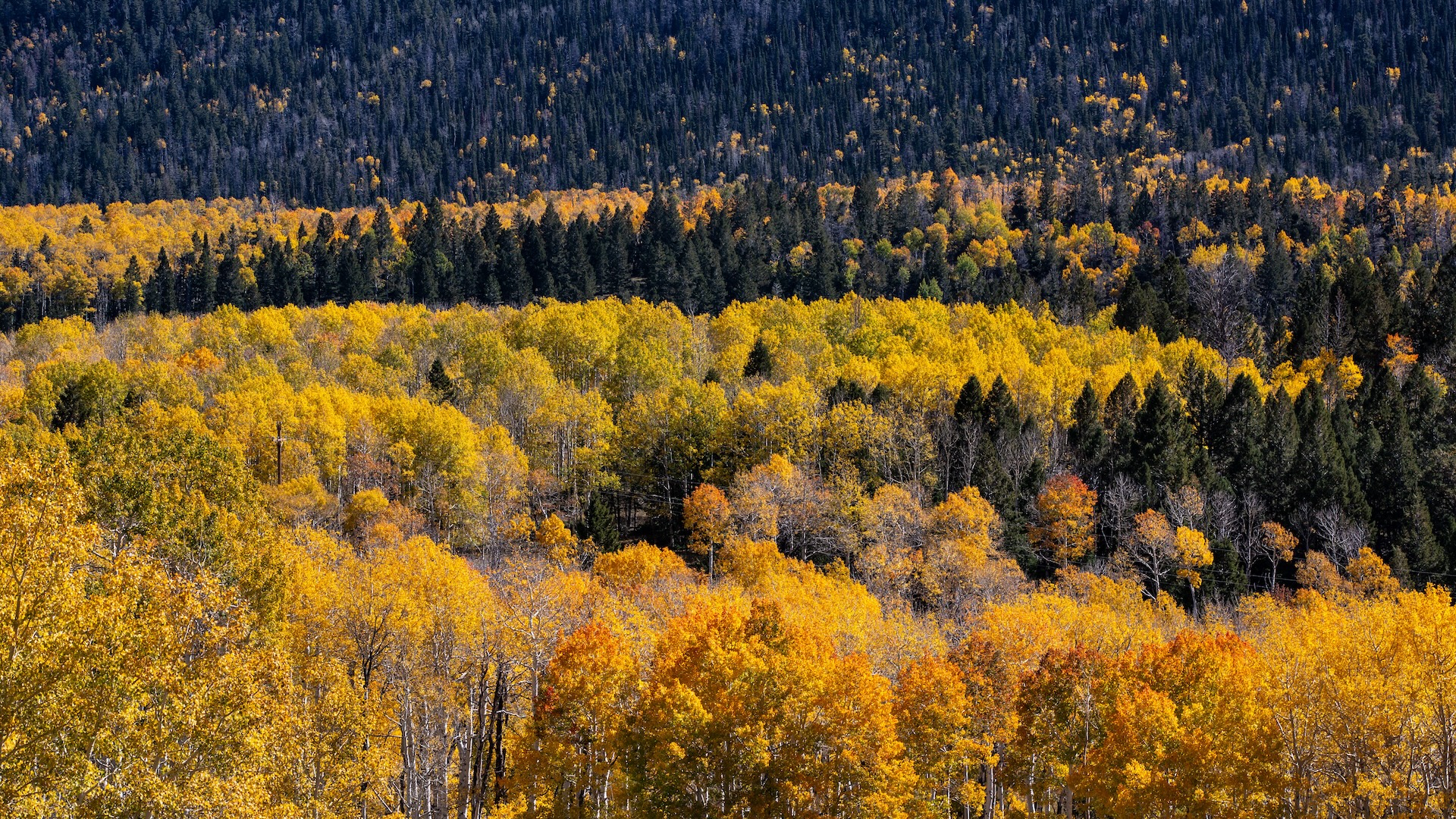
Pando, an enormous quaking aspen that spans more than 100 acres (40 hectares) in Utah, is not only one of the largest known organisms on Earth — it's also one of the oldest, scientists have discovered.
New research finds that the aspen (Populus tremuloides), which reproduces clonally through shoots called ramets, is between 16,000 and 80,000 years old. The oldest non-clonal organism on Earth is Methusalah (Pinus longaeva), a bristlecone pine in eastern California that is 4,856 years old. The age estimate for Pando is based on the mutation rate over time in the aspen's genome. The study is not yet peer-reviewed and has been posted on the preprint website bioRxiv.
There is a broad range in the estimate, study lead author Rozenn Pineau, a researcher at Utah State University, told Live Science, because the mutations in the aspen are rare, and it's not entirely clear how quickly these genetic quirks pile up in new shoots and stems. But sampling of a lakebed near Pando also revealed the continuous presence of aspen pollen over 60,000 years, suggesting that the clone may have been around since the time humans began migrating out of Africa.
"How did this organism survive all of the environmental changes that it has been facing throughout the years?" Pineau said. "These are really interesting questions to think about."
Pando is the world's largest tree. Its name means "I spread" in Latin, and it does indeed spread: The organism has given rise to around 47,000 individual stems in the Fishlake National Forest in south-central Utah. These stems are all connected by a massive underground root system, which adds up to make Pando the world's heaviest living organism.
Related: The oldest tree in the world (and the 7 runner-ups)
Until now, there has been no reliable science on Pando's age, said Paul Rogers, the director of the Western Aspen Alliance, a research and conservation organization. Rogers was not involved in the new study, though he does hold an adjunct position at Utah State University's ecology department. "What they found here is a significant step forward," he told Live Science.
Rogers suspects Pando's real age may lean closer to 16,000 years than to 80,000 years old, because about 20,000 years ago, glaciers advanced to within about a mile (1.6 kilometers) of the spot where the aspen grows now. It may have been difficult for aspens to survive in that near-glacial environment, he said. The lakebed that Pineau and her colleagues sampled for pollen, meanwhile, could capture pollen from a larger area than Pando covers, he said. To prove that the pollen came from Pando specifically would require ancient DNA evidence.

The study also found that Pando seems adept at keeping its genome in check. Mutations varied by space less than the researchers expected, Pineau said. "You expect [stems] that are close in space to also be closer genetically," she said. But the researchers did not see this relationship unless they zoomed into stems less than 49 feet (15 meters) apart, meaning that Pando is genetically similar overall.
"Mutations can locally accumulate," Pineau said, "but they actually spread way less than we expected."
To better understand the aspen's mutation rate and further narrow down its age, Pineau and her colleagues now plan to work with Alyssa Phillips, a researcher in plant biology at the University of California, Berkeley.
"Many different plants have the same growth pattern," Pineau said. "This one has received a lot of attention because it’s big and old, but it can teach us a lot about plant biology and also about plant resilience."
Pando has been struggling in recent years due to an overabundance of grazers — some cattle, but mostly deer, Rogers said. Parts of the aspen have been fenced off to protect it, and the strategy, along with a couple of wet years, seems to be boosting the clone's growth.
"I am surprised myself, as a researcher who has done a lot of monitoring there, that it looked like there was some sort of rebound going on when I was there earlier this fall," Rogers said.







